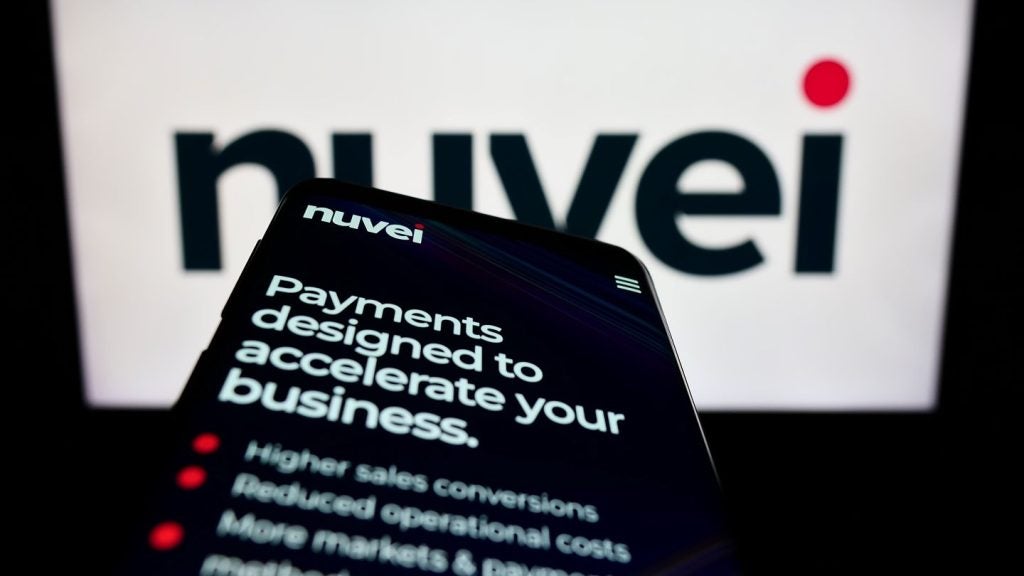The rapid development of Italy’s prepaid market stands
in stark contrast to the uptake of prepaid elsewhere in Europe,
with banks taking a leading role, but there are several inherent
characteristics and consumer payment trends that have shaped the
market’s growth so far. Victoria
Conroy and John Hill
report.
Amid all the contradictory reports on the
prospects for the prepaid industry, with some giving glowing
forecasts about profitability potential, but others predicting that
prepaid will fail to meet expectations, there is at least one
common denominator in the prepaid market that everyone agrees is a
stand-out success – Italy.

Access deeper industry intelligence
Experience unmatched clarity with a single platform that combines unique data, AI, and human expertise.
Italy has led the rest of Europe in the
development and adoption of prepaid products, in stark contrast to
its Western European neighbours where prepaid is only just
beginning to gain traction.
The contradictions of the Italian market when
compared with the rest of Europe only serve to illustrate the point
that prepaid is a global product – but a product which when
tailored to the local market and needs of the targeted end users
can surpass all expectations and deliver real value to both the
prepaid provider and the product user.
The fact that prepaid card usage in Italy has
grown so rapidly in such a short space of time is all the more
surprising given the dominance that cash has enjoyed as a payment
method.
What are the cultural and economic factors
that have helped prepaid in Italy to take off to such a remarkable
degree?

US Tariffs are shifting - will you react or anticipate?
Don’t let policy changes catch you off guard. Stay proactive with real-time data and expert analysis.
By GlobalDataAlthough Italy has the highest percentage of
cash transactions in Europe, representing 93 percent of all
transactions made, debit card usage is strong and is growing with
every passing year. Statistics from the central bank of Italy,
Banca d’Italia, show that as of 2008, there were over 38.8 million
debit cards in circulation, a rise of 12.8 percent from 2007.
Although the level of cash withdrawals is
growing year-on-year, with 60 percent of all bank card transactions
being ATM withdrawals in 2008, an increasing proportion of POS
payments are being made.
So clearly, Italian consumers are comfortable
with payment card usage and are using their cards more and more at
the expense of cash usage. Payment card usage for e-commerce
transactions is also growing rapidly. In 2008, the number of online
credit card payments grew by 12.6 percent to over 30 million
transactions, while prepaid and debit card transactions grew by 15
percent.
However, Italian consumers are extremely
price-conscious and have a reputation for mistrust of banks,
particularly when it comes to bank fees. Prepaid products are
relatively much cheaper when compared to traditional debit card
accounts and credit card products.
Whereas many Italian credit cards charge an
average annual fee of €30 ($43), and some current accounts can
charge upwards of €10 per month, or €15 on a quarterly basis,
prepaid cards cost as little as between €5 and €15 to purchase
initially.

Prepaid card trends
Figures from Banca d’Italia show
that prepaid has gained remarkable momentum. In 2005, prepaid card
numbers stood at just over 3.2 million. By 2008, 8.2 million
prepaid cards were in circulation, with card numbers between 2007
and 2008 alone growing by over 41 percent.
As of 2008, prepaid cards comprised
over 13 percent of all payment cards in Italy, up from 7.8 percent
in 2007 and 6.4 percent in 2006.
Prepaid transaction value has also risen
sharply, with transaction value jumping by over 36 percent in 2008
to total €4.5 billion, compared to €3.3 billion in 2007.
Although total card POS transactions continued
to rise in number by 6.5 percent in 2008, the bulk of that growth
(46.4 percent) came from prepaid cards, however, prepaid cards
still account for no more than 5 percent of total card payments in
Italy. But prepaid’s growing popularity – underpinned by its
convenience, ease of use and low costs – has widened its appeal
among mainstream consumers.
With a population of around 60 million people,
Italy has one of the highest mobile phone penetration rates in the
world, with approximately 73.2 million subscribers at the end of
2007, or a nearly 127 percent penetration rate. Prepaid as a
payment method for mobiles far outstrips post-paid phone contracts.
As such, Italian prepaid players have been able to bypass the issue
of consumer prepaid education to a large degree, an issue which is
still hampering the development of prepaid in other European
markets.
Marco Siracusano, head of Intesa Sanpaolo’s
family marketing division, told CI why he thinks Italy has become
such a pioneering centre for prepaid.
“Italy is historically a full and strong debit
card market,” he said, “even though there are still a lot more
unbanked people than elsewhere in Europe and we are among the few
countries where current accounts are taxed. These are some of the
reasons prepaid cards have become so popular here.”
Gianluigi Rocca, marketing manager of the
cards business unit at payment processor SIA-SSB, told CI: “More
than 90 percent of mobile phone contracts are prepaid, so there was
no problem in introducing a financial model using the same concept.
Prepaid cards provide a direct substitute for cash and cheques as
they can be used by customers that do not have a bank account and
can be as ‘anonymous’ as cash for online and offline payments.
“Italy still has a cash-dominated culture and
one of the key indicators for this is the average value for a
prepaid card cash advance – it is circa €130, €120 for national
brands and €139 for international brands, which is largely
different from that of other countries, where the average POS
transaction value is in the range of €65. One of the most
interesting markets is the online market and this reflects the
expansion of the e-commerce business in the last couple of years,
and highlights other card products’ limited ability to serve the
demand for online payments.”
Francesco Guzzetta, business leader of product
sales for prepaid in southern Europe at MasterCard, agrees that
online spending has helped spur the uptake of prepaid in Italy.
“According to the latest independent market
research, online spending still represents the most significant
share (up to 40 percent), but usage at retail locations for
everyday purchases is also a growing trend. Travel and
entertainment spending (both online and at the physical POS) is
also very particular to prepaid cards in Italy, and the airline
sector is definitely one of the most popular categories. Average
usage patterns are quite homogeneous for general-purpose reloadable
prepaid programmes, with around €1,000 of average spending per
year, five to six reloads per year, and an average transaction
amount close to €70,” he told CI.
The way that prepaid is priced in Italy has
also helped its uptake, largely due to the homogeneous nature of
the prepaid model.
“Unlike UK and other EU countries, where
offers are more specialised on vertical markets/applications (for
example gift cards, travel cards, teen cards), the main proposition
in Italy is still an undifferentiated general-purpose card,”
Guzzetta said.
“Pricing follows a pure pay-per-use approach,
which is very simple and transparent: a one-off purchasing fee for
the card, reloading fees (generally a flat fee, not linked to
amount reloaded), and ATM withdrawal fees. Generally speaking, the
complex pricing models and hidden fees typical of other EU markets
do not apply in Italy.
“However, product standardisation, absence of
disposable card propositions, higher average rate of usage and
float, and larger scale of programmes help to keep simplicity. It
is also worth noting that, unlike the UK where prepaid is a game
for small niche operators, the market in Italy is driven by major
traditional financial institutions, who can more easily benefit
from scale economies and lower dedicated infrastructural
costs.”
Rocca told CI: “In Italy one of the key issues
in pricing is the general drop of the different fees over time. A
forthcoming report will indicate a minimum annual cost of €20 for
an open-loop card. There are a wide variety of charges and charging
structures in this report but card issuance and top-up are always
present, and monthly or annual costs aren’t explicitly used in
Italy. Currently
top-up costs for open-loop cards are in the range of €0.50-€0.70,
which is a middle-level cost when compared with, for example, the
UK and the Germanic countries charging over €1.”

The importance of banks and Poste
Italiane
There is another contradiction
between Italy and the rest of Europe that has defined the
industry’s development, in that Italian banks have been at the
forefront in rolling out consumer-orientated prepaid offerings.
Elsewhere, prepaid products have largely been rolled out by
specialist prepaid programme managers and third-party
providers.
Outside of Italy, European banks have been
noticeably reticent to fully embrace consumer prepaid products,
wary of a lack of mass volumes needed to make bank prepaid
programmes profitable.
Common features on many bank-issued open-loop
cards in Italy include the ability to top up mobile phones at ATMs,
money transfers, SMS transaction alerts, and fee-free ATM
withdrawals.
More recently, Italian prepaid issuers have
fine-tuned their products to offer what are being termed as “light
banking” propositions – in other words, positioning prepaid cards
as portable current accounts.
Issuers such as UniCredit and Intesa Sanpaolo
have rolled out open-loop cards incorporating IBAN identifying
codes, enabling salary payments to be made directly onto the card
and facilitating recurring payments such as utility bill payments,
which has helped to promote prepaid as a cost-effective financial
service access tool.
But banks can not take all the credit for
prepaid. Without the involvement of Poste Italiane, its financial
arm BancoPosta and its launch of its ground-breaking Postepay
prepaid card in 2003, it is likely that prepaid would not have
taken off to such a degree.
Postepay has been such a success that it is
widely regarded in the payment industry as the world’s most
successful and popular prepaid product – indeed, its numbers are
evidence of its staggering success. Having racked up over 800,000
Postepay cards in 2004, card numbers grew by a staggering 475
percent to reach over 4.6 million at the end of 2008.
“BancoPosta has been able to develop a
European leadership addressing their customer base with a very good
marketing approach and a set of different products,” Rocca told CI.
“Their success was so wide because they directly addressed the
needs of their customer base, which had never been met before by
other financial instruments.”
Having launched gift, incentive, corporate and
contactless versions of Postepay, in 2008 Poste Italiane expanded
the Postepay range to include a new card, NewGift, its first
reloadable gift card offering, and also rolled out salary and
benefit disbursement prepaid cards.
One often-repeated mantra in the prepaid
industry is that a prepaid product will only be effective if it is
supported by a widespread reloading and distribution network, and
here, Poste Italiane benefits from having over 14,000 post offices
across Italy, something which has also contributed to Postepay’s
success. Additionally, in 2008 Postepay’s topping-up network
expanded to include over 20,000 betting shops in the SISAL
chain.
The float on Postepay cards (or the amounts
due to Postepay customers who have topped up their cards) has
increased significantly year over year, standing at over €432.7
million as of 2008, compared to €181.4 million in 2005.
Gift cards begin to gain
traction
Another defining characteristic of
the Italian prepaid market is the dominance of open-loop or
network-branded cards, which stands in stark contrast to the rest
of Europe where closed-loop retailer-issued gift cards are more
popular. Open-loop cards account for over 70 percent of all prepaid
cards in Italy. Despite the prevalence of open-loop prepaid cards,
and the familiarity of consumers with the concept of prepaid,
closed-loop retailer cards have been surprisingly slow to take
off.
The main reasons are the fragmented nature of
Italy’s retail market, where market shares are much more evenly
spread out between retailers, and the absence of a legacy of
paper-based gift voucher programmes. Up until now, there have not
been sufficient economies of scale to justify single closed-loop
programmes, but some of the larger retailers, such as Esselunga and
Coop, have recently rolled out gift card programmes.
However, many in the Italian payment industry
are sceptical about the prospects for closed-loop gift cards.
“Open-loop prepaid cards are much preferred
over closed-loop cards and gifting has not been as popular in Italy
as in other European countries, although it is beginning to gather
some speed now,” Rocca said.
“US gifting has had phenomenal success but
expectations of similar performances will never be met in Italy. In
the past few years, figures have been very low in Italy, probably
also because there are not so many large retailers as elsewhere in
Europe, but this situation is changing as some Italian retailers
are understanding that gift cards may represent an important
opportunity for them, above all in terms of profitability
margins.”
Siracusano is also reticent to point to gift
cards as a growth market: “In the rest of the world prepaid has
been very heavily linked to gift cards. They are probably one of
the only successful types of prepaid cards abroad. However,
problems have arisen in Italy because a lot of people have tried to
create gift cards here according to US and UK models.
“One of the reasons prepaid cards like gift
cards have been successful is if there has been a very clear and
loyal alliance between the financial institutions and the big
retailers. Gift cards can be a very useful tool, but if there are
no clear leaders or commitment or the usual alliance with both
financial institutions and retailers, then they simply do not
work.”

The regulatory situation
Regulation of prepaid in Italy is
simple, in that there is one rule for all in that it is not
possible to distribute open-loop reloadable prepaid cards outside
of bank branch networks, which according to Rocca, acts as a
barrier to further market growth.
“The introduction of the Payment Services
Directive (PSD) will change this situation but what we would like
to see is more flexibility,” he said. “From the open-loop
reloadable point there is no problem, the infrastructure is very
good, but again we need more flexibility in terms of distribution
of cards.”
Meanwhile, Guzzetta points to anti-money
laundering (AML) regulations as being another possible pressure
point for prepaid.
“In the current environment there is increased
pressure on card profitability, at the same time the value of
prepaid for consumers and issuers is more and more understood.
National and European AML regulations on anonymous reloadable cards
might instead be an opportunity for the introduction of new
distribution models, avoiding the need of contract signature and
cardholder identification by qualified operators, and therefore
allowing for non-traditional distribution channels,” he told
CI.
However, he is sceptical that the introduction
of the PSD, which will give the green light to non-financial
institutions to offer payment services, will significantly change
the market.
“Economies of scale are essential in prepaid,
and therefore in the short term we will probably not see new
players becoming direct issuers of prepaid cards,” Guzzetta added.
“More likely, the scenario will be characterised by partnerships
and agreements between non-banking operators and existing financial
institutions.”
Siracusano believes it would be tough for
anyone to attempt to enter into the market at this stage,
especially without some serious banking clout behind them.
“To succeed in prepaid cards you can’t just
concentrate on the product, but on your service model as well,
instituting good marketing practices and backing it all up with a
good distribution chain and in Italy there are not many players
that are able to do this,” he explained. “Prepaid cards are not a
high return product at smaller volumes, so you need to be able to
take advantage of some kind of economies of scale before you start
really profiting from them. This is the main reason there really
isn’t space for smaller players, who could instead be offering
credit cards for much higher returns.”
In April 2009, the Italian Antitrust Authority
published a report which took a rather more negative view of the
Italian prepaid market, specifically calling into question the
level of fees charged on bank-issued prepaid cards when compared to
the cost of current accounts and other payment cards.
According to the report, the annual cost to a
prepaid cardholder varies according to whether the cardholder has a
current account or not; if so, the card represents a complementary
payment method alongside the current account and has a relatively
small annual cost that averages out to around €18. However, if the
prepaid cardholder does not have a current account, they will
likely make a greater number of transactions and incur more fee
charges, with the cost increasing significantly and varying from a
minimum of €44 to a maximum of €117, with the average being
approximately €67.
The report suggests that given the prevalence
of prepaid mobile phone cards, which in 2007 carried over €8
billion in credit, they could become a useful tool in opening up
competition in the wider prepaid industry, even more so since
recharging costs for such cards were eliminated in 2007.
“Should the necessary regulatory changes be
brought in by a European Commission directive, consumers could use
their telephone credit to make small payments, from supermarket
shopping to train tickets to local public transport, taking
advantage of the fact that recharging is free and unused credit is
reimbursable,” the report said.
“The option of making purchases with a prepaid
telephone card would pave the way for qualitative innovation in
services (such as on-the-move payments via cell phones using new
technology like near field communication) and potentially lower
transaction costs (in terms of recharging and commission costs),
not only for consumers but also for retailers. From a competition
point of view, then, it is desirable that innovative forms of
payment through prepaid cards be made available by parties not
belonging to the traditional banking and credit world,” the report
concluded.
Looking to the future
Over the next few years, Italy’s prepaid market is likely to be
characterised by increasing functionality and differentiation.

“In the next few years it is expected that
prepaid offers in Italy will evolve from the undifferentiated
general-purpose card to more segmented products. This is a trend we
can already observe today, for example with the ‘light banking’
prepaid account proposition. Also, closed/restricted acceptance
products will probably make their appearance in the Italian
market,” Guzzetta said.
Siracusano believes there are types of cards
currently being pioneered by issuers in Italy that could
potentially open up a rich new seam of customers for the
market.
“Certainly there is some saturation with the
kinds of cards and features currently on offer. I think that there
is a lot of potential for adding new features to prepaid cards in
order to create a sort of mix between a current account and what we
now think of as a prepaid card,” he said.
“We very recently launched Superflash, which
is a prepaid card with some of the most important functions of a
current account – for instance, the ability to receive money
directly on the card with direct debit – and we’ve also tried to
make it as friendly and functional as possible on the internet.
“The evolution of the prepaid cards will
involve taking on board the principle features of the current
account and also perhaps to provide an additional current account
for the more sophisticated customers that want to close some of the
additional current accounts they have,” Siracusano added. “The
market will also start to develop additional features in
convergence with mobile payments and mobile phones as well as
proximity (contactless and RFID) payments and also activities that
arise from specific loyalty applications.”
Rocca told CI: “Status quo is not an option –
differentiation is key. Change creates opportunity to build better
economic processing models and at SIA-SSB we are working on
different lines of evolution, where the general idea is to add
additional value to the current prepaid proposal. I believe it is
important to give issuers the possibility to develop vertical
proposals and specialise, for example, in corporate cards or in
specific solutions, such as contactless transit solutions. We are
already able to support issuers in the creation of such vertical
segment proposals. In addition to this, we are developing specific
fraud solutions for prepaid cards as well as for closed-loop
cards.
“From the point of view of the prepaid
platform itself, we are investing and evaluating possible
partnerships, because we believe that in some areas, such as
gifting, we probably need a simpler solution. We are used to
dealing with large-sized programmes and the volumes we’re seeing in
the area of gifting aren’t on this level. Contactless is already
successful in transit, specific business sectors and multiple
geographies and issuers are considering how best to integrate new
payment tools to develop their franchises. At SIA-SSB we believe
contactless solutions are here to stay and effective and
significant opportunities to leverage the value proposition of
contactless solutions are currently available.”
There is also likely to be a greater role for
government applications, according to Guzzetta: “In Italy there is
still a significant part of the population with limited access to
financial services. As a consequence, prepaid cards can surely play
a role in public administration initiatives, as has been proved by
the recent Carta Acquisti social benefit card, the largest prepaid
government programme in Europe, launched by Poste Italiane in
cooperation with MasterCard.
“On the other hand, the potential for
corporate applications appears to be more questionable, due to high
fragmentation and small size of Italian companies, and will
probably only represent an opportunity for niche players.”







